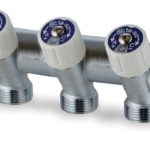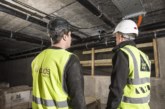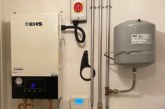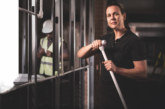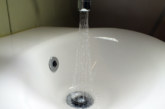A manifold plumbing system can offer housebuilders greater control over a building’s plumbing while reducing potentially costly remedial work, according to John Gittens, Business Development Manager for Maincor.
Plumbing can be one of the biggest headaches in a new build as it can pose a serious risk of future remedial work due to leaks if the work carried out is not to a high standard, or the system used happens to be sub-standard.
Over the years many different pipe jointing methods have been utilised for domestic plumbing systems from soldered copper, many plastic push-fit variants and hydraulic press fit systems. Each of these have their own benefits for the specifier and installer and similarly each will have its drawbacks. Creating a leak-proof system entails first selecting the best plumbing method for the job, and then carrying out a thorough installation resulting in minimal risk of leaks developing over time.
There is a solution available that is currently not widely used by housebuilders, but it can greatly reduce the risk of potential leaks and therefore costly remedials whilst adding further convenience to both the installer and homeowner alike.
End-to-end
Manifold piping systems offer an end-to-end installation solution for plumbing systems by removing all of the intermediate joints between the hot or cold water service point and the outlet. This is done by utilising an individually isolatable manifold which distributes hot and cold water to appliances around the property.
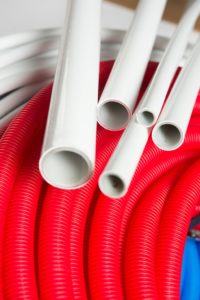 This type of system offers benefits over conventional, multi-jointed branch piping systems, such as those utilising press-fit or push-fit where each joint can present a leak risk, and is especially suited to the new build environment where ready access is available for installation.
This type of system offers benefits over conventional, multi-jointed branch piping systems, such as those utilising press-fit or push-fit where each joint can present a leak risk, and is especially suited to the new build environment where ready access is available for installation.
This method of installation normally consists of individual manifolds for both hot and cold services containing isolation valves. Typically mounted in the airing cupboard or under the stairs, these manifolds are connected to both the hot and cold water services and from the manifold separate feed pipes are run in continuous loops to the draw off point, such as a washing machine, basin, shower or WC.
This means that each circuit or piece of sanitaryware can be individually isolated; something that is particularly useful in multi bathroom properties because it gives the installation engineer the opportunity to test each circuit individually as they go, allowing for ease of adjustment of flow and tailoring of pipe sizes for individual appliances too.
This further reduces the risk of faulty pipework being sealed into the walls or floor, which can cause a nightmare in terms of maintenance should leaks occur. In fact, with this method there are no joints under floorboards or inside walls at all. In the event of maintenance being required, the piece of sanitaryware or appliance in question can be isolated for work to be carried out, leaving remaining appliances up and running as the rest of the system remains fully operational.
Circuit protection
In effect the manifold becomes to plumbing what the consumer box is to electrics; as each appliance has its own circuit of pipework, if the appliance leaks or is faulty that circuit can simply be turned ‘off’, thereby taking the panic out of plumbing. There is another important benefit to this type of system too; by eliminating intermediate joints, installation time is shortened and critically installation costs are reduced, making it even more attractive to the savvy housebuilder.
When coupled with a high quality Multi-Layer Composite Pipe (MLCP) such as that from Maincor, along with the manufacturer’s range of hydraulically pressed fittings, installers and housebuilders alike can enjoy further peace of mind. Overall, end-to-end installation demonstrates improved efficiency and security in the built environment, giving housebuilders and the installation team the reassurance that comes with having improved control over the building’s plumbing.

